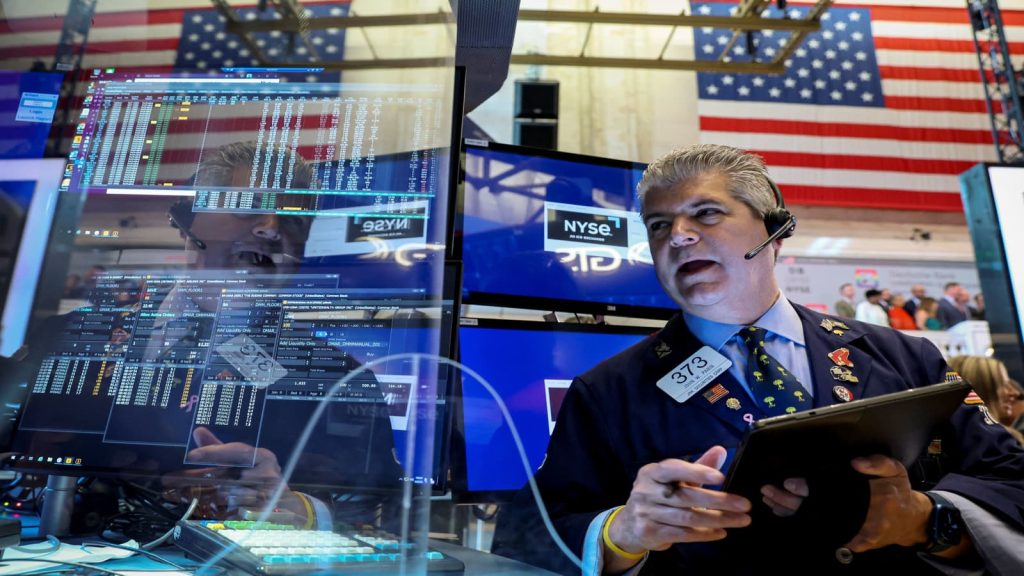A stock symbol, also known as a ticker symbol, is a unique series of letters representing a particular publicly traded company on a stock exchange.
Stock symbols are a critical element in the world of investing and trading, serving as essential shorthand for investors and financial analysts worldwide.
In the early days of the stock market, traders used to communicate stock transactions using a telegraph. These messages needed to be brief to save time and reduce telegraph costs, so companies were assigned unique symbols or abbreviations, which eventually evolved into the ticker symbols we know today.
Stock symbols are typically one to five letters long, with their composition and length varying depending on the stock exchange and the country. For example, in the United States, the New York Stock Exchange (NYSE) uses symbols ranging from one to three letters, while the National Association of Securities Dealers Automated Quotations (NASDAQ) uses four to five letter symbols.
The ticker symbol doesn’t always directly align with the company’s name. For instance, The Boeing Company is represented by the ticker symbol ‘BA’ on the NYSE, while the McDonald’s Corporation trades under ‘MCD.’ Conversely, some companies have ticker symbols that closely match their names, such as ‘AAPL’ for Apple Inc. and ‘GOOGL’ for Alphabet Inc., the parent company of Google.
The choice of a ticker symbol can be a strategic marketing decision for a company. Some organizations opt for memorable or clever ticker symbols to draw attention to their shares. For instance, Anheuser-Busch InBev, the company known for brewing Budweiser beer, trades under the symbol ‘BUD.’
It’s essential to note that the same ticker symbol can represent different companies in different markets. For instance, ‘T’ stands for AT&T on the NYSE, but it represents Telstra on the Australian Securities Exchange (ASX). Therefore, context is crucial when interpreting stock symbols.
In addition to the basic ticker symbols, there are also suffixes and prefixes that provide additional information about a particular stock. For example, symbols might indicate if a stock is a preferred stock (‘PR’), if it has no voting rights (‘NV’), or if it’s a foreign issue (‘F’). On electronic communication networks (ECNs), additional letters might indicate the stock’s listing market or exchange.
Stock symbols are not only used for traditional stocks or equities but also for exchange-traded funds (ETFs), mutual funds, options, futures, and other tradable securities. These symbols play a vital role in ensuring clear and efficient trade execution. They help avoid confusion and mistakes that could occur if companies were identified by their full names, which can often be similar.
Symbols also facilitate the quick identification of stocks in financial news, reports, and analyses. For example, if an analyst writes a report on the performance of Facebook, they would use its ticker symbol, ‘FB,’ allowing any reader to quickly search for and potentially invest in that stock.
In the digital age, stock symbols have become even more crucial. They are used in financial databases, spreadsheets, and algorithms that automate trading decisions. High-frequency trading (HFT) algorithms, for instance, rely on these symbols to execute trades in fractions of a second.
Furthermore, with the advent of online trading, stock symbols are used by investors to place trades on digital platforms. When an investor wants to buy or sell shares in a company, they must input the company’s stock symbol into the trading platform to execute the transaction. Therefore, understanding and correctly using stock symbols is a fundamental skill for modern investors.
Despite their ubiquity in the financial world, stock symbols are often overlooked or taken for granted by the general public. Yet, they play a vital role in the global financial infrastructure. They are the universal language of the stock market, breaking down barriers and promoting a seamless, efficient, and unified platform for exchange.
In the complex ecosystem of the financial market, stock symbols are the codified identifiers that help streamline communication. They make it easier for investors to navigate the labyrinth of publicly traded companies, regardless of the size, industry, or location of the company.
Investing in stocks would be significantly more challenging without these symbols. Imagine having to type out ‘Berkshire Hathaway Inc. Class A’ every time you wanted to check the stock’s price, instead of simply typing ‘BRK.A’. Or imagine the confusion if full company names were used, and investors confused ‘Delta Air Lines, Inc.’ with ‘Delta Apparel, Inc.’ In this regard, stock symbols help prevent costly mistakes.
Moreover, stock symbols are democratizing tools, making investing more accessible to the masses. They simplify complex financial information, making it easier for novice investors to enter the market. The ease of identifying a company on a trading platform by its stock symbol has, in part, contributed to the rise in retail investing.
As indicators of economic trends, stock symbols often appear in media outside the financial sector, such as general news, social media discussions, and even pop culture. They have become part of our everyday lexicon, further bridging the gap between Wall Street and Main Street.
In conclusion, a stock symbol, while a simple string of letters, is a powerful tool in the financial world. It stands as the identity of a company in the bustling marketplace, serving as a beacon for investors worldwide. Whether you’re a seasoned trader, a financial analyst, or a newcomer to investing, understanding stock symbols is integral to your journey in the world of finance. They are more than just abbreviations; they are the critical connectors in the global conversation about companies, economies, and investment strategies. Despite their brevity, their impact on the clarity, speed, and efficiency of financial transactions is immense, underlining the adage that good things often come in small packages.







